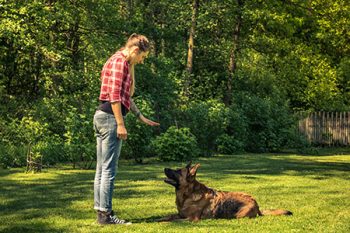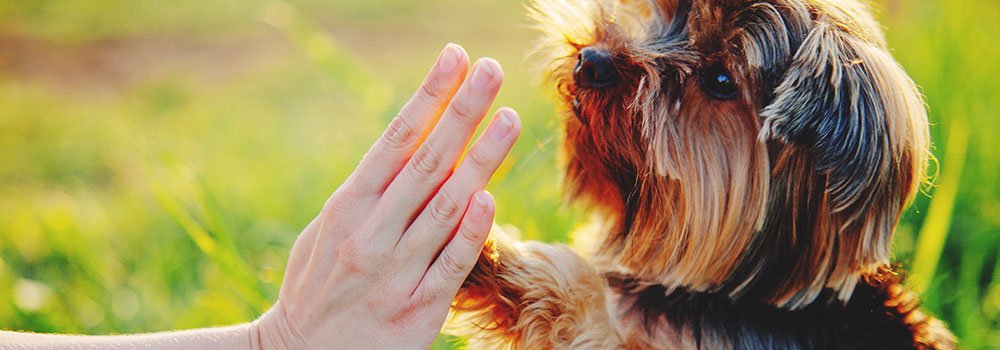Getting Started on Dog Training
There is so much to know about dog training. This article will address ideas to get you started on a regular, successful training routine. Setting aside time and sticking to a routine will begin to show results in no time. It may not feel that way at first, but stick with it and you will begin to see a difference within the first week, in most cases.
Good dog training begins with getting to know your dog. If a dog is new to you, it takes a bit of time to find out what appeals to him or her. Having a firm understanding of certain things will greatly improve the process. Of course, never underestimate the value of socialization. Taking your dog to doggie daycare in Portland, OR teaches her to get along with other dogs and gives her confidence in social settings.
Start making notes on:
- What is your dog’s favorite activity – Does Fido like lounging on your lap and getting his hears rubbed over a game of fetch with a ball? Would he prefer a game of tug-of-war with at home over a trip to the dog park? Pay attention to what makes your dog the most excited and happy. This will help with setting up a reward system.
- What treat does your dog like best – Similar to the above question, knowing what treats your dog loves will help with incentive training. Try offering treats with a different one in each hand and see which one your dog goes for first. That will help you narrow down a favorite since most dogs will eat just about anything.
- What type of toy does s/he like – Some dogs prefer stuffed animals. Others love to fetch a ball. Still, others love the challenge of a Cong filled with peanut butter.
- What doesn’t your dog like – If your dog is nervous around other people or dogs, do the training alone (unless you are specifically training him or her on better manners around others.
When you have a firm understanding on the above, you can devise the perfect reward system to encourage your dog to love training time!
Optimal Environment + Favorite Treats = Happy Training
Make it easier on your dog by starting the training in the friendliest environment for him or her, and then test it out in other areas when you have the behavior well established. Find a quiet, distraction-free space where your dog feels safe. Unless your dog has weight problems, start with small portions of his favorite training treats. These should be small, as not to over-feed your dog. You should also off-set the amount of food you feed with the number of treats your dog gets. If obesity is already a problem, use affection alone as the reward for a job well done.
Consistency
The top imperative any dog trainer will offer is consistency! In the beginning, start by doing everything the same. Go to the same place, use the same treats. It helps if you use the favorite treats for training only and no other time. When the behavior is correct, give the same treat and offer the same words (and tone) to say “good dog!”
If you are working to train a dog to stop doing something, such as stop begging, you must always act with consistency. This means that when the dog begs, you never, ever reward the behavior with a bite off your plate. If a dog gets what he wants 1 time out of 100, it becomes worth it to her to keep trying. Your behavior can stop or reinforce your dog’s behavior. So, make sure the way you act is the same every time.
Start Easy
 Google or use a training book to find how to train your dog for the specific trick or behavior you want to start with. Do not select something complicated. Starting with “sit” is a good place to begin. If your dog knows that one, try to lay down or circle (walking in a circle).
Google or use a training book to find how to train your dog for the specific trick or behavior you want to start with. Do not select something complicated. Starting with “sit” is a good place to begin. If your dog knows that one, try to lay down or circle (walking in a circle).
- Having a well thought out plan will make things go much more smoothly.
- Once you have space and time set up and know what treat or other rewards to use decide on a favorite follow-up activity, like playing fetch or a long petting session.
- Decide on a specific amount of time to train. Generally, five to ten minutes to start.
- Have one command, such as “sit” you want to teach.
- Keep the treats out of sight. Use a pocket or spot on the countertop that is out of reach and out of sight for your dog. Otherwise, the sight of the treats can become the only focus for the dog.
At first, it may seem like you are getting nowhere. Don’t be discouraged. Your dog is picking up on more training than you realize. Make sure you only use positive encouragement. Reinforce all good and all-most-there behavior with a happy tone delivered with the same positive phrase. If you give off a “no that’s not it” tone or expressions while your dog is getting started, you may inadvertently move backward in the training process.
If you are training your dog to sit, give her the “good girl!” and reward her even if she only begins to sit but doesn’t get her butt all the way to the ground. When you start, even those nearly there’s are an accomplishment.
Don’t physically force your dog. To learn to sit, try a hand signal and slightly move toward your dog with your body. Never grab him and force him into a sitting position.
These tips will get you set up for a regular training routine. Remember to keep it the same every time. If you do it once in a while the dog will have a hard time learning the desired trick of behavior. It is as simple as five minutes a day. Just stick with it. In time your dog will look forward to the time and enjoy learning new tricks. As he begins to expect that learning time, not to mention the quality time and praise from you, he will pick up on new tricks much more quickly.
Contact us at Safe Journey Dog Boarding for more information on how dog daycare can improve your dog’s behavior in Portland, OR.

